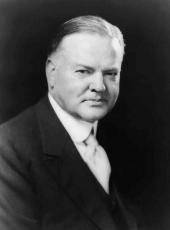NOMINATION OF A SUPREME COURT JUSTICE
THE PRESIDENT. As you probably already know, I have sent the name of Circuit Judge John J. Parker of North Carolina to the Senate for the Associate Judgeship in Justice Sanford's place. 1
1 Edward T. Sanford was an Associate Justice of the Supreme Court from 1923 to his death on March 8, 1930.
The nomination of Judge Parker was strongly opposed by labor organizations and the National Association for the Advancement of Colored People. On April 9, 1930, the White House released a Justice Department memorandum as an answer to criticism by opposing factions. The Senate Judiciary Committee reported the nomination adversely, and on May 7, the Senate rejected it by a vote of 41 to 39.
Although fitness is, of course, the primary requisite for selection to the Supreme Court, it is interesting to note that that particular circuit has not been represented in the Court for 70 years. All the other circuits have been represented during the last 20 years except that circuit. The original setup of the Court was presumably, although not necessarily, based on a distribution amongst the different circuits, and at least this selection has the interesting point to it that it does meet the geographic question a little better than the selections hitherto proposed.
Q. What circuit is it, Mr. President ?
THE PRESIDENT. The fourth.
Q. Mr. President, do you mean that every section of the country except that has been represented on the Court in the last 70 years ?
THE PRESIDENT. In the last 20 years. The circuit longest without a justice is the fourth--70 years without a justice.
Q. Who was the last from that circuit, Mr. President?
THE PRESIDENT. I can even tell you that. [Peter V.] Daniel, retired in 1860.
The seventh circuit--that is, Indiana, Illinois, and Wisconsin--has been 20 years without a justice.
The fifth circuit--Georgia, Florida, Alabama, and Mississippi--has been without one since [Chief] Justice [Edward D.] White died in 1921.
The third circuit--Pennsylvania, Delaware, New Jersey--has been 8 years without a justice.
Q. Mr. President, are you following your usual practice to give out the endorsements in this case ?
THE PRESIDENT. I don't think so. I may say that they are very extensive and embrace very large sections of the judiciary as well as the laity of lawyers.
THE HAITIAN COMMISSION
The Haitian Commission was here for preliminary report. They will be engaged during the next week in making out their final report and recommendations. That report will cover the steps that they recommend to be taken in the gradual establishment of self-government in Haiti sequent to the steps that have already been taken.
As you know from the press, they have arranged for a temporary neutral president, who takes office on the 15th of May, to be followed later by an election of their Congress. That Congress in turn elects a president, and the Commission is now engaged on formulating those steps to be taken subsequent to that time. They hope to have their report ready at the end of the week.
WITHDRAWAL OF MARINES FROM NICARAGUA
We have arranged, also, today to withdraw further marines from Nicaragua. We will reduce the force there to somewhere between 900 and 1,000. This means the withdrawal of some 750 to 850, it being one of the sequent steps to withdrawing from that country.
And that is all that I have on this occasion.
Note: President Hoover's ninety-eighth news conference was held in the State, War, and Navy Building at 4 p.m. on Friday, March 21, 1930.
The White House also issued the text of the President's statement about the report of the President's Commission for the Study and Review of Conditions in the Republic of Haiti (see Item 93).
Herbert Hoover, The President's News Conference Online by Gerhard Peters and John T. Woolley, The American Presidency Project https://www.presidency.ucsb.edu/node/211713


